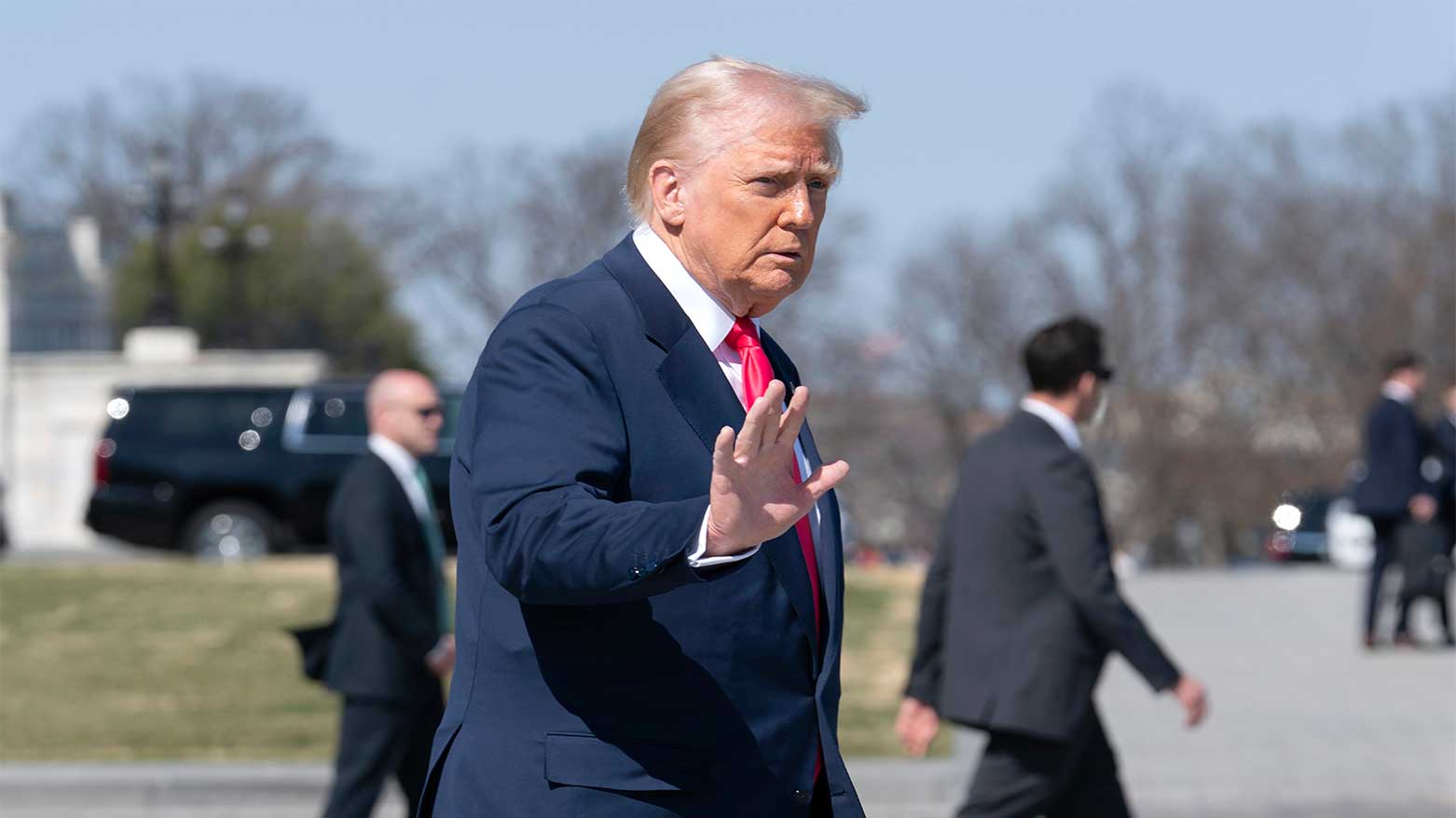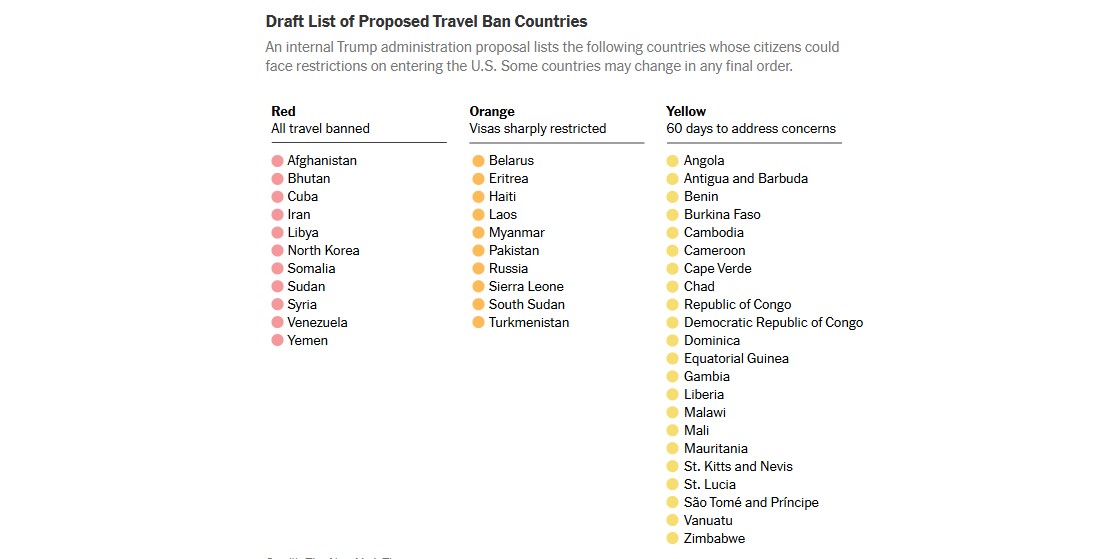Trump’s New Travel Ban Draft Targets 43 Countries, Expands First-Term Restrictions
As Trump revives travel restrictions, fears of diplomatic fallout and legal battles emerge.

ERBIL (Kurdistan24) - The Trump administration is weighing a new travel ban that could target citizens from as many as 43 countries, significantly expanding restrictions compared to those imposed during Donald Trump’s first term.
According to a report by The New York Times, a draft list compiled by U.S. diplomatic and security officials proposes dividing the affected nations into three tiers, with some facing outright entry bans and others encountering strict travel limitations.
The draft recommendations, developed by the State Department in collaboration with intelligence and security agencies, include a "red" list of 11 countries whose citizens would be entirely barred from entering the United States. Per The New York Times, these nations are Afghanistan, Bhutan, Cuba, Iran, Libya, North Korea, Somalia, Sudan, Syria, Venezuela, and Yemen. Officials familiar with the matter emphasized that this list is still under review and subject to change before reaching the White House.
In addition to the full ban, an “orange” list of 10 countries would face significant travel restrictions. While some individuals, such as affluent business travelers, might still be granted entry, immigrants and tourists would encounter stricter visa requirements, including mandatory in-person interviews. As reported by The New York Times, this category includes Belarus, Eritrea, Haiti, Laos, Myanmar, Pakistan, Russia, Sierra Leone, South Sudan, and Turkmenistan.
The travel ban initiative follows an executive order signed by Trump on January 20, directing the State Department to identify countries with deficient vetting and security screening processes. The New York Times notes that the Bureau of Consular Affairs has led the effort, with input from the Departments of Justice, Homeland Security, and the Office of the Director of National Intelligence. The final report is due at the White House within days.
Additionally, a "yellow" list includes 22 nations that will be given 60 days to rectify security concerns or risk facing harsher travel restrictions. The New York Times states that these concerns could range from insufficient information-sharing on travelers to weak passport security measures or even the sale of citizenship as a workaround for immigration policies. This list reportedly includes Angola, Antigua and Barbuda, Benin, Burkina Faso, Cambodia, Cameroon, Cape Verde, Chad, the Republic of Congo, the Democratic Republic of Congo, Dominica, Equatorial Guinea, Gambia, Liberia, Malawi, Mali, Mauritania, St. Kitts and Nevis, St. Lucia, São Tomé and Príncipe, Vanuatu, and Zimbabwe.

Notably, Afghanistan was not part of Trump’s initial travel bans during his first term but has now been included following the Taliban’s takeover in 2021. However, The New York Times highlights that several other countries on the draft list—such as Bhutan—were unexpected additions, raising questions about the administration’s selection criteria.
Uncertainty remains over whether the ban would apply to individuals already holding valid visas or green cards. Furthermore, while Trump’s previous travel bans faced legal challenges, ultimately being upheld by the Supreme Court in a revised form, the new proposal’s broader scope may invite further legal scrutiny. As The New York Times points out, Biden had revoked Trump’s previous travel bans upon taking office in 2021, calling them "a stain on our national conscience."
Meanwhile, the proposal to restrict Russian travelers appears contradictory, given Trump’s ongoing efforts to recalibrate U.S.-Russia relations. Similarly, placing Venezuela under travel restrictions could complicate recent diplomatic engagements between the two countries.
During Trump’s first term, his administration argued that travel bans were necessary for national security, a position he has reiterated in his executive order. However, The New York Times underscores that many of the targeted nations are predominantly Muslim-majority, poor, or led by governments viewed as weak or corrupt, raising concerns about the policy’s broader implications.
As discussions continue, diplomatic and security officials are reviewing the draft list to assess the accuracy of the identified security risks and weigh potential policy consequences. The final decision on the expanded travel ban now rests with the White House.
